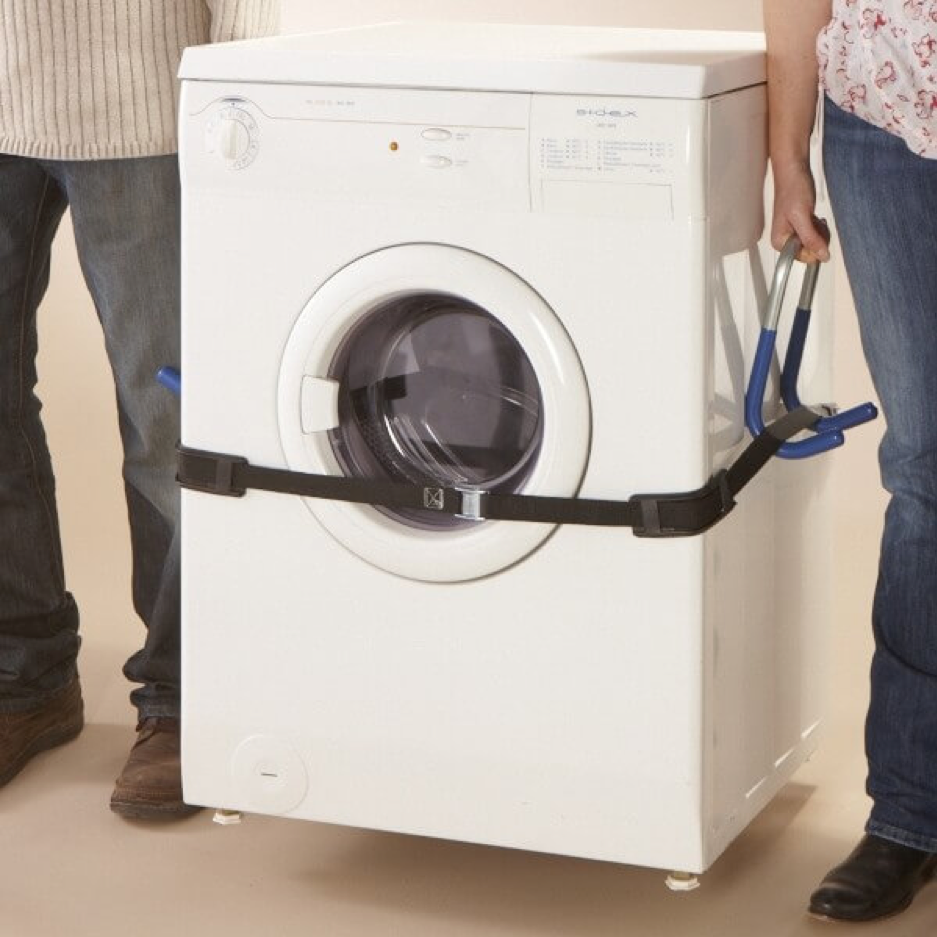How to Move a Washing Machine Without Hiring Movers

How to move a washing machine by yourself? Sometimes you do not want to leave your washing machine behind. Yes, its transportation will cost money, but your initial assessment before the move shows that the effort is worth it.
Of course, the easiest way to move a washing machine is to contact professional Sydney removalists and let them do it for you, it will cost you money, but you can choose to move your washing machine by yourself in order to save money. However, let’s take a quick look: moving a washing machine without hiring experienced movers will not be easy at all. Feasible, but by no means a walk in the park.
Follow these tips to move a washing machine on your own, and things should be fine in the end for your move.
What to do before moving a washing machine
Regardless of whether your washing machine is a front-loading model or a top-loading model, there are several things you need to do to prepare for the steps involved in moving a washer from home to home.
Pay special attention to these steps because they are important. Skipping a single task will certainly make things harder for you and can even make the whole operation of moving the washing machine impossible depending on the nature of the skipped step.
1. Find friends or family
Yes, it’s possible to move a washing machine without hiring movers. However, you cannot finish the job alone – you will always need at least two other people to ensure safety.
If you are not able to get friends or family members to give you a hand, then you should seriously consider hiring professionals to do it for you
2. Consult the instruction manual of your washer
Choose your help well. Check to see if you kept the owner’s manual for your washing machine. You will need it to consult the manufacturer’s recommendations when transporting it.
If you cannot find it, do a Google search with the brand of your washing machine, its model and the word “manual” at the end. If this fails, contact the appliance store from which you purchased it and ask for help.
Keep in mind that consulting the owner’s manual is a recommended step, it’s not something you need to do to move your washing machine successfully.
3. Prepare the transit bolts
The transport bolts (also called shipping bolts) are metal rods that are inserted into special slots in the washing machine to keep the drum stationary and steady during transportation of the machine. The drum suspension mechanisms are very sensitive to damage caused by excessive vibration or sudden jerky movements. You must therefore find the shipping bolts supplied with your washing machine when you bought it.
It is strongly discouraged to move a washing machine without transit bolts as this can be very risky and can cause expensive damage to your appliance. If you have no idea where these bolts are located, contact the local appliance store for assistance.
The method of installing washer lock bolts (lock washers) is not too complicated but varies from model to model. That’s why it’s important to consult your device’s instruction manual to find out exactly how it’s done.
4. Get a Dolly device
You will need a Dolly device to take your washing machine out of your home on to a moving truck. Washing machines are both large and heavy, so there is no way around this – you need a moving cart to keep things safe.
How much does a washing machine weigh? Large washers weigh 160-230 pounds, medium-sized front-loading washers weigh about 180 pounds, and small front loaders weigh about 140 pounds.
Rent an appliance cart from a local moving company or buy one for use in the future. As you know, a mobile cart is an extremely useful piece of equipment that you will use whenever you need to move.
5. Secure all necessary supplies to move your washing machine
- You have arranged friendly assistance when it comes time to move your washing machine.
- You found the owner’s manual of the washer.
- You have found and prepared the shipping bolts for the unit.
How to move a washer by yourself - Looks like you’re almost ready to move your washing machine.
- And you made sure you had a cart to transport the washer to the van.
What else do you need to move a washing machine?
- furniture covers to protect the washing machine;
- a small bucket to catch the drain water;
- a pair of sliding joint pliers for disengaging the drain pipe;
- a rope or moving straps to secure the washer to the carriage;
- packing tape.
How to move a washing machine by yourself: step by step guide
What is the best way to move a washing machine? The best way to move a washer is to hire experienced movers with extensive experience in moving all types of home appliances. And because the experience alone plays a major role in the moving industry, using the services of a world-class moving company should mean zero stress for you and total safety for your device and your home.
And in case you have made the decision to try to move your washing machine without any professional help, then the steps below will give you a good idea of what to do when moving a washing machine. The first steps are all preparation steps and will teach you how to prepare a washing machine – clean, disconnect and drain the washing machine, then follow the steps of packing and moving this appliance.
- Step 1. Empty your washer. Take out all the clothes from your washing machine.
- Step 2. Clean the drum and drain hoses. Clean the drum and drain hoses of any detergent residue by performing the shortest normal wash cycle (only water, do not use detergent) or by performing the specialised cleaning cycle found on most modern washers. Then leave the washing machine door open for at least 24 hours so that the drum can dry completely.
- Step 3. Turn off the power. Remember to always turn off power to household appliances before handling to avoid the risk of electric shock. Follow the power cord of your device and unplug it from the wall outlet to disconnect it from the power grid.
- Step 4. Turn off the water supply. Locate the local water valve – located generally behind the washing machine – and turn it clockwise (in the usual direction) to turn off the water supply. In some cases, you may need to move the washer a little to access the water valve. Be careful not to loosen any of the lines if you need more space to reach the water supply valve.
- Step 5. Drain the water supply hoses. How to drain a washing machine to move? It makes sense that water stays in the pipes even after the washer has completed its cleaning cycle.
To drain water from a washing machine, use the sliding-joint pliers to disconnect hot and cold-water supply pipes (for washer models where water is NOT heated inside) or the cold-water supply pipe the water is heated inside the unit).
When unplugging a supply line from a valve, keep the hose upright to avoid unnecessary water spillage and empty it into the tray you have prepared in advance. Be sure to disengage and empty the pipes one at a time.
- Step 6. Remove the water supply hoses. Use the pliers again to clear the cold-water inlet pipe or the cold and hot water supply pipes from the washing machine. Place the hose(s) in a plastic bag, seal it with tape and pack separately in a cardboard box. Label the WASHER ACCESSORIES box.
- Step 7. Empty the drain hose. Disconnect the washer drain hose from the drain hose that leads to the wastewater channel, if any, and drain the remaining amount of water into the bucket.
Keep the washer drain hose attached to the appliance, attach it to its own bracket, or secure it to the back of the appliance.
- Step 8. Place the transport bolts. Remember, you must not move a washing machine without the shipping bolts. As explained above, the drum suspension mechanism of your washing machine is quite sensitive and can easily break during transportation unless it is properly stabilised and immobilised. To do this, you usually need to insert the transport bolts on the back of the washing machine, thereby securing the washer drum.
However, the exact method of inserting washer lock bolts varies from model to model, so it is very important to consult your appliance’s user manual. If you are not sure how to do it or if you still do not have the shipping bolts, ask for professional assistance instead of risking damage to your expensive device.
- Step 9. Secure the power cord. Attach the power cable to the back of the unit with a piece of tape. This action will eliminate the risk of tripping on a swing cable on the day of the move.
- Step 10. Gather your helpers. Of all the steps to move, step 10 is where your assistants should appear on the scene. You may have completed all the preparation steps above, but this is where you must lift heavy loads, so it’s time to do it the right way.
- Step 11. Wrap the machine in covers. Moving a washing machine is a matter of SAFETY but you still need to protect the device



